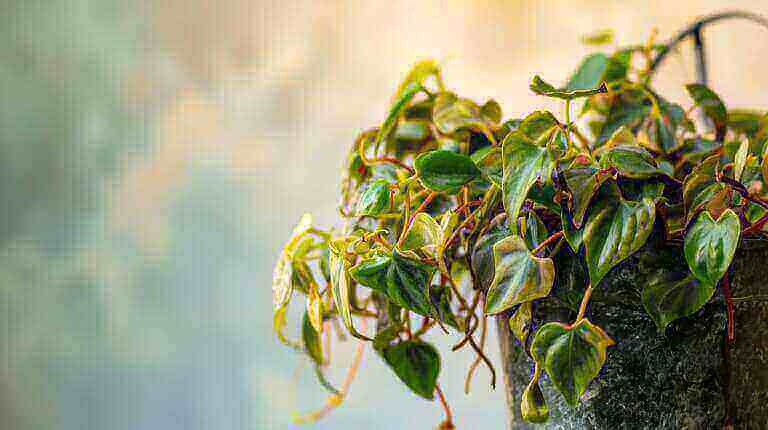How to Revive a Peace Lily Drooping and Wilting: Bringing A Dying Peace Lily Plant(Spathiphyllum)
In the realm of indoor gardening, the peace lily stands as an emblem of tranquility and beauty. However, even the most resilient plants can succumb to wilting, leaving us feeling disheartened and longing for their revival.
In this article, we will explore the art of bringing a wilting peace lily back to life, delving into the causes behind its decline and offering practical solutions to nurture its growth. With a touch of care and a sprinkle of knowledge, we can restore the vibrance of this beloved botanical companion.
Key Takeaways
- Consistently water the peace lily and allow the top inch of soil to dry out before watering again
- Increase humidity levels around the plant using water trays or humidifiers
- Evaluate and adjust lighting conditions to provide bright, indirect light
- Regularly inspect and treat the plant for common pests such as spider mites, mealybugs, aphids, and fungus gnats
Assessing the Damage: Identifying the Causes of Wilting
The article examines the causes of wilting in peace lilies, offering a comprehensive assessment of the damage. Identifying solutions and troubleshooting techniques are crucial steps in reviving a wilting peace lily.
Wilting in peace lilies can be caused by various factors, including overwatering, underwatering, temperature extremes, inadequate lighting, and pest infestations.
Overwatering is one of the most common causes of wilting in peace lilies. When the soil is constantly wet, it can lead to root rot, preventing the plant from absorbing water properly. On the other hand, underwatering can cause the plant to wilt due to insufficient moisture. Finding the right balance and ensuring proper drainage is essential for the plant’s health.
Temperature extremes can also cause wilting. Peace lilies prefer temperatures between 65°F and 80°F (18°C and 27°C). Exposure to extreme heat or cold can stress the plant and lead to wilting.
Inadequate lighting is another factor to consider. Peace lilies thrive in bright, indirect light. Insufficient light can hinder photosynthesis, causing the plant to weaken and wilt.
Lastly, pest infestations, such as spider mites or aphids, can damage the plant’s leaves and roots, leading to wilting. Regularly inspecting the plant for pests and promptly treating any infestations is crucial for its survival.
Watering Woes: Reviving a Dehydrated Peace Lily(Spathiphyllum)
Proper hydration is crucial for reviving a dehydrated peace lily and restoring its vitality. When it comes to moisture management, here are three key points to consider:
- Consistent watering: Peace lilies thrive in moist but not waterlogged soil. Ensure that you water your plant regularly, allowing the top inch of soil to dry out before watering again.
- Adequate drainage: Good drainage is essential to prevent root rot. Make sure your peace lily is potted in a well-draining soil mix and that the pot has drainage holes.
- Humidity levels: These tropical plants prefer higher humidity levels. You can increase humidity around your peace lily by placing it on a tray filled with water and pebbles or by using a humidifier.
By following these tips, you can effectively manage the moisture levels and provide proper hydration to your dehydrated peace lily, allowing it to recover and regain its vitality.
Now that we have addressed the issue of watering woes, it is time to shed light on another important aspect of reviving a wilting peace lily: addressing lighting problems.
Shedding Light on the Issue: Addressing Lighting Problems
To effectively address lighting problems and revive a wilting peace lily, it is essential to evaluate the intensity and duration of the light exposure it receives, as well as ensuring a balance between natural and artificial light sources. Peace lilies are known for their preference for bright, indirect light. Insufficient light can lead to weak growth and a wilting appearance. On the other hand, excessive light exposure can cause leaf burn and scorched patches. Finding the right balance is key to promoting growth and restoring the plant’s health.
When considering lighting solutions for your peace lily, it is important to understand the difference between natural and artificial light sources. Natural light, such as sunlight, provides a full spectrum of wavelengths that are beneficial for plant growth. However, it is crucial to avoid placing the plant in direct sunlight, as this can lead to damage. Artificial light sources, such as fluorescent or LED lights, can be used to supplement natural light or provide light in areas with limited access to sunlight.
To help you better understand the lighting needs of your peace lily, here is a table summarizing the ideal light conditions for its growth:
| Light Intensity | Duration | Source |
|---|---|---|
| Moderate to High | 10-12 hours/day | Natural Light |
| Low to Moderate | 8-10 hours/day | Artificial Light |
Nourishing the Roots: Fertilizing and Repotting Tips
When fertilizing and repotting a peace lily, it is crucial to carefully assess the nutrient requirements and drainage needs of the plant in order to ensure optimal root health and growth. Proper nourishment and soil quality are essential for the overall well-being of the plant.
Here are some important tips to consider:
- Choose the right fertilizer: Peace lilies thrive in a balanced fertilizer with equal amounts of nitrogen, phosphorus, and potassium. Look for a slow-release formula that will provide a steady supply of nutrients over time.
- Feed the plant sparingly: Over-fertilization can lead to root burn and other issues. It is important to follow the instructions on the fertilizer package and avoid overfeeding the plant.
- Repotting with care: Repotting is necessary when the plant outgrows its current container. Use a well-draining potting mix that retains moisture without becoming waterlogged. Ensure that the new pot has drainage holes to prevent water from accumulating at the bottom.
Pest Control: Dealing With Common Peace Lily Houseplant Pests
One effective method for addressing common peace lily pests is implementing a regular inspection routine to identify any signs of infestation and promptly take appropriate action. By conducting regular inspections, you can catch any potential infestations early on, preventing further damage to your peace lily.
To help you in your pest control efforts, here are some common peace lily pests you should be aware of:
| Pest | Signs of Infestation | Natural Pest Remedies |
|---|---|---|
| Spider Mites | Webbing on leaves and stems | Wiping leaves with a mixture of water and mild soap, applying neem oil |
| Mealybugs | White, cotton-like masses | Rubbing alcohol solution, applying insecticidal soap |
| Aphids | Sticky residue on leaves | Spraying leaves with a mixture of water and dish soap |
| Fungus Gnats | Small, flying insects | Allowing the soil to dry out between waterings, using sticky traps |
Frequently Asked Questions
How Do I Prevent My Peace Lily From Wilting in the First Place?
Preventive measures can help keep a peace lily from wilting. It is important to understand common mistakes that can lead to wilting, such as overwatering or underwatering, exposing the plant to extreme temperatures, or placing it in direct sunlight.
To prevent wilting, maintain a consistent watering schedule, ensuring the soil is moist but not overly saturated. Place the peace lily in a location with indirect sunlight and provide adequate humidity.
Regularly check for signs of pests or diseases and take appropriate action if necessary.
Can I Use Tap Water to Hydrate My Peace Lily, or Should I Use Filtered Water?
When it comes to hydrating houseplants like the peace lily, the choice between tap water and filtered water is an important consideration. While tap water may be sufficient for some plants, using filtered water has several benefits.
Filtered water removes impurities and chemicals that can potentially harm plants, ensuring that they receive clean and pure hydration. This can promote healthier growth, prevent the build-up of mineral deposits in the soil, and reduce the risk of waterborne diseases.
How Often Should I Fertilize My Peace Lily, and What Type of Fertilizer Should I Use?
Fertilizing frequency and the best fertilizer type for peace lilies are important considerations for maintaining the health and vibrancy of these plants. Peace lilies typically benefit from regular fertilization, usually every 2-4 weeks during the growing season.
A balanced, water-soluble fertilizer with a 20-20-20 NPK ratio is commonly recommended. This provides essential nutrients for growth and flowering. However, it is essential to follow the specific instructions on the fertilizer packaging and adjust the frequency and concentration accordingly.
Is It Necessary to Repot My Peace Lily, and if So, When Should I Do It?
Repotting a peace lily can have several benefits for its overall health and growth. It allows the plant to replenish its soil nutrients, provides more space for root growth, and prevents the plant from becoming rootbound.
Signs that indicate a peace lily needs repotting include roots growing out of the drainage holes, stunted growth, or the plant becoming top-heavy.
It is generally recommended to repot a peace lily every 1-2 years, preferably during the spring when the plant is actively growing.
What Are Some Natural Methods for Controlling Pests on My Peace Lily?
Natural pest control methods for peace lilies can help revive a wilting plant without resorting to chemical solutions. Several options are available, such as introducing beneficial insects like ladybugs to eat harmful pests like aphids or using neem oil as a natural pesticide.
Additionally, maintaining proper watering and humidity levels, ensuring adequate sunlight, and regularly inspecting the plant for signs of pest infestation can all contribute to the health and vitality of the peace lily.
Why does my peace lily droop?
The peace lily may droop due to insufficient water or overwatering. It’s important to check the soil moisture and ensure your peace lily is not sitting in waterlogged soil.
What causes a droopy peace lily?
Overwatering is a common cause of a droopy peace lily. Excess water can lead to root rot, which causes the plant to droop.
How can I revive a drooping peace lily?
To revive a drooping peace lily, first check the soil. If it’s dry, water your peace lily thoroughly. If the soil is moist, you may need to repot the plant with fresh soil.
Why are there yellow leaves of my peace lily?
Yellow leaves can be a sign of overwatering or poor drainage. Ensure your peace lily is not sitting in waterlogged soil.
How can I bring my peace lily back to life?
Regular care, including proper watering and providing the right light conditions, can help revive your peace lily and promote new growth.
What should I do if my peace lily leaves has brown tips?
Brown tips on a peace lily plant may indicate a lack of humidity or over-fertilization. Adjust your plant care routine accordingly.
Why is my peace lily dying?
A dying peace lily could be due to several factors including overwatering, under-watering, low humidity, or exposure to direct sunlight.
What conditions do peace lilies like?
Peace lilies are tropical plants and they prefer warm temperatures, high humidity, and indirect light.
Can Reviving a Peace Lily with Curling Leaves Help Bring It Back to Life?
Reviving a peace lily with curling leaves requires understanding the underlying causes. Often, it’s due to improper watering habits, such as overwatering or underwatering. To bring it back to life, adjust the watering routine to maintain soil moisture without waterlogging the plant. Additionally, ensure appropriate lighting conditions and consider using a humidifier to enhance its environment. With proper care, the peace lily leaves curling issue can be resolved, allowing the plant to thrive once again.
How can I prevent root rot in my peace lily?
To prevent root rot, avoid overwatering and ensure your potting soil drains well. If you notice drooping leaves or other signs of root rot, you may need to repot the plant.
How often should I water my peace lily plant?
Water your peace lily when the top inch of soil is dry. Overwatering can lead to yellow leaves and root rot.







